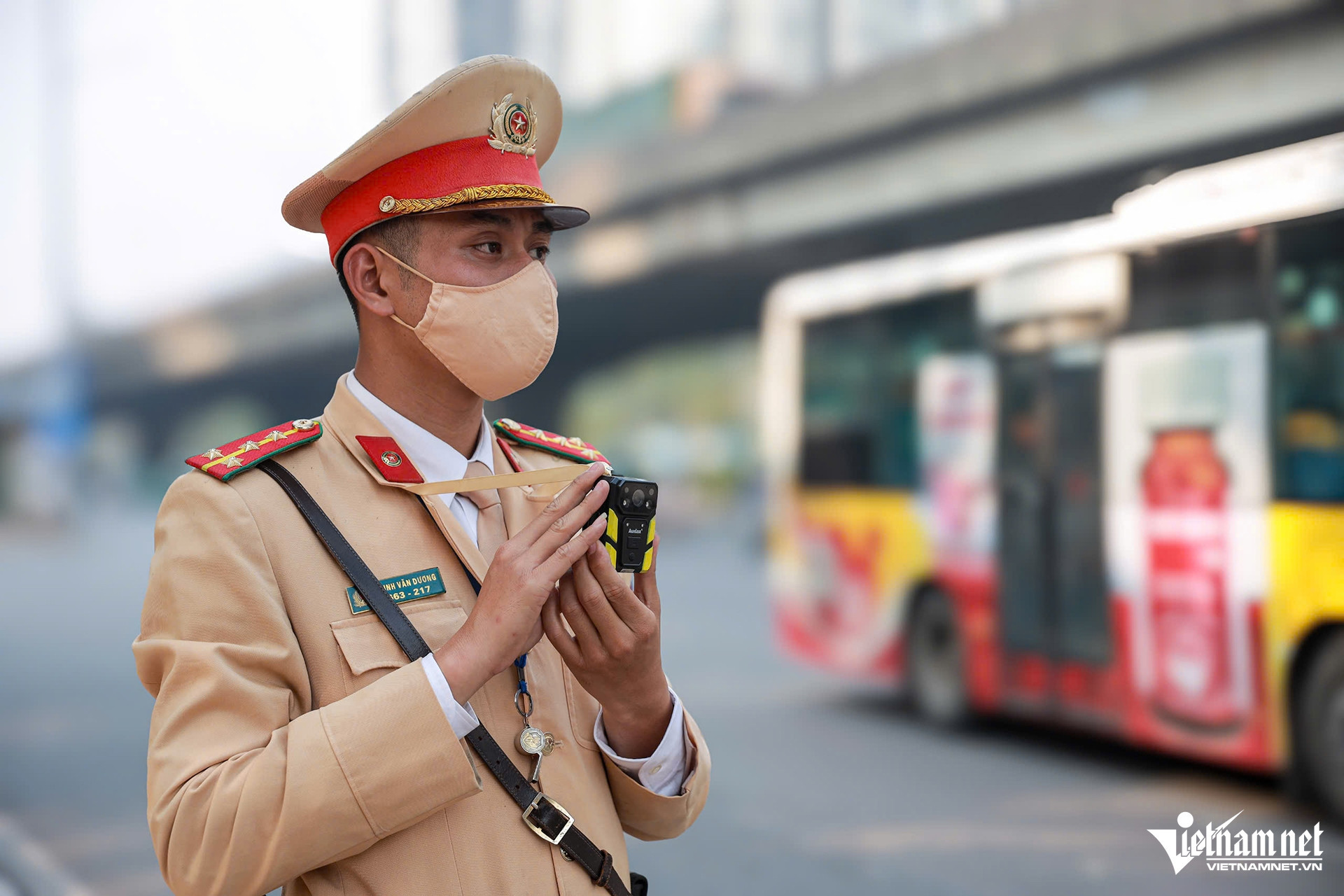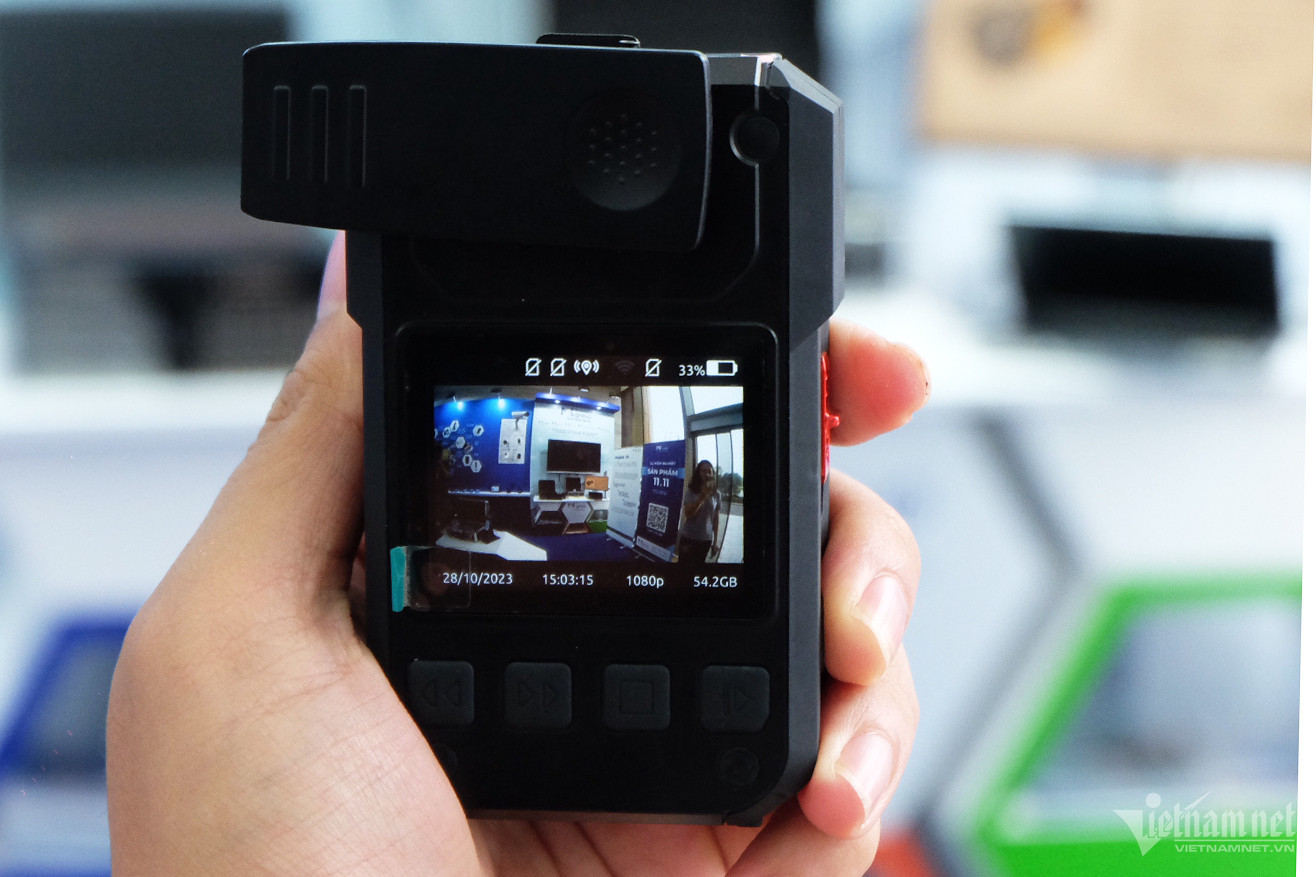
Many people have been surprised to see Hanoi traffic police officers equipped with body cameras at many intersections of the city.
These cameras not only record traffic participants, but also images that can be extracted for review. The footage can be printed which serve as evidence for people’s traffic violations.
Lieutenant Colonel Pham Van Chien, head of Road Traffic Police Team No6, said the body and handheld cameras are specialized equipment provided by the Ministry of Public Security (MPS) to Hanoi's police.
All traffic police officers have been equipped with these cameras to document violations and monitor traffic conditions on patrol routes. In addition to recording images, these cameras also show the date, time, and GPS coordinates.
According to Chien, since the cameras were put into operation, traffic violations have reduced significantly, partially thanks to articles on newspapers and social networks.
Traffic participants’ awareness of abiding by the Road Traffic Law and traffic lights has been heightened.
“Thanks to technology, road users can realistically review their violations. Footage can let them be convinced. I think using body camera is really a civilized approach,” Chien said, adding that his unit has proposed expanding the use of newer, more comprehensive equipment and installing more cameras at intersections.
Commenting about the use of cameras to record traffic violations, Le Tuan Khoi, Director of MK Vision, stressed that specialized cameras are a valuable tool supporting the work of traffic police.
“Image data, especially video, provides a clear and straightforward way to show violators their infractions,” Khoi noted.
According to him, previously, when traffic policemen did not have specialized tools to record traffic conditions, they had to use smartphones to record, which led to controversy between the police and people.
“Road users might argue that the images shown by the police could be easily edited by using software,” he explained.
“Therefore, using specialized devices with software specifically designed for traffic police, including robust data security features (encryption, digital signatures, etc.), helps reduce disputes during enforcement actions,” Khoi explained.
In fact, cameras have been used by the traffic police for many years. However, because of limitations in infrastructure, technology and budget, the number of cameras put into use remains modest.

Other solutions
According to Khoi, body and handheld cameras not only can be used by the police, but also in other fields, such as healthcare, retail/wholesale, hotel, tourism and public services.
New-generation cameras have AI processing capabilities to support the process of identifying and warning of violations.
Bui Tien Dung, director of Vconnex project, said the police’s deployment of technological devices such as body worn and handheld cameras makes a big progress in controlling traffic. However, he warned that the devices may pose challenges in data security, image quality and investment costs.
In order to maximize technological outcomes, authorities need to conduct comprehensive training sessions to enhance traffic police officers’ skills. It is also necessary to choose the cameras which can meet standards, have high durability with modern technologies. They must also be highly secured and friendly to users.
Dung, an expert in digital transformation and IoT, said in the future, the traffic police may also apply other new technologies to improve traffic management.
These include IoT-integrated AI camera, drones to monitor the traffic and IoT radar system that measures drivers’ speed.
Traffic police could develop smart traffic navigation apps that provide real-time traffic updates using data from IoT sources (sensors, cameras), which can help citizens select optimal routes and avoid congestion.
Big Data should be applied to give traffic prediction and identify ‘black spot’ of accidents through analyzing big data from cameras, sensors and other mobile devices.
The collected data would allow authorities to assess the impact of current traffic management measures and make necessary adjustments.
In the future, Vietnam should set up more smart traffic signal systems connected via IoT, which automatically adjusts signal timing based on traffic volumes at intersections, optimizing traffic flow and reducing wait times.
Meanwhile, Blockchain can be used to store data about traffic violations, which ensures transparency, immutability and traceability.
In addition, both road users and traffic police should be trained in situational handling through virtual reality (VR) and augmented reality (AR) technologies, enhancing practical skills and decision-making capabilities.
Trong Dat